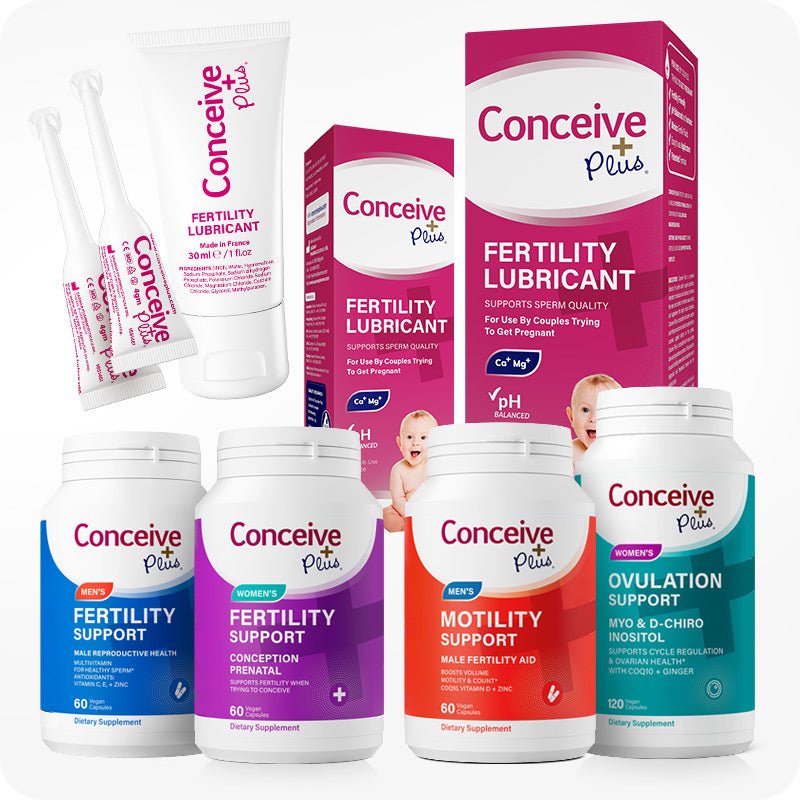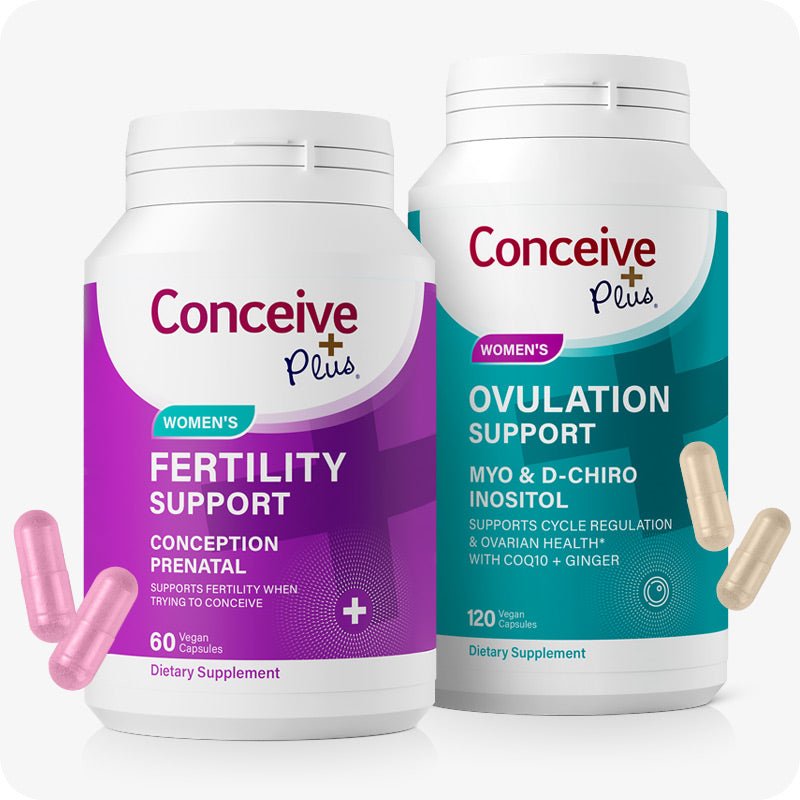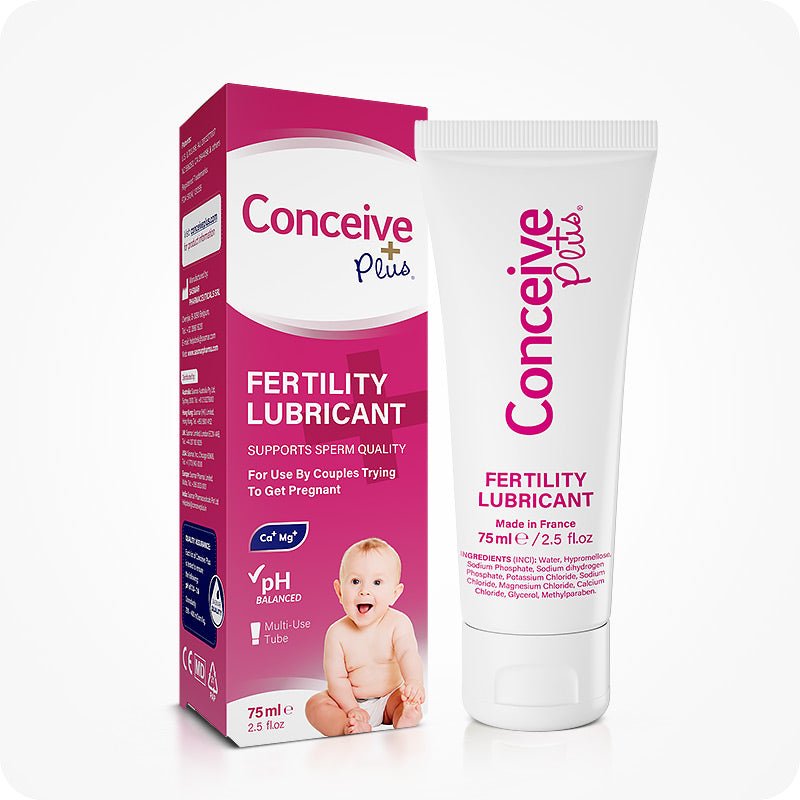How Can You Know If You Are Fertile?

Fertility health is a common concern for any couple planning to conceive. People often ask how they can know they are fertile and can conceive a child. Such questions are common among women since male fertility can be evaluated with simple tests to determine sperm parameters [1].
On the other hand, female fertility involves her ability to produce a healthy egg, provide a favorable environment for fertilization, and support the baby for nine months inside the womb [2]. This complexity makes it hard for women to understand if they are fertile.
In this article, we will answer how can you know if you are fertile, which includes the signs that your body shows for fertility, different tests to confirm fertility, and ways to determine the most fertile days in the menstrual cycle.
Signs of Fertility Your Body Shows
It is true that your body sends signals to let you know when you are fertile. You can track these signals to understand your fertility health and the chances of your conception. Here are some common signs of fertility:
-
Cervical Mucus Changes
Cervical mucus is a thick fluid released by the cervix inside the vaginal canal. The consistency of this fluid changes throughout the menstrual cycle, indicating different stages of the cycle. When you are most fertile, which is around the days of ovulation, your cervical mucus becomes clear, stretchy, and slippery, like raw egg whites [3].

This slippery nature of the fluid helps sperm move easily toward the egg. It also acts as a filter by inhibiting weak sperm from entering the uterus. Paying attention to the changes in cervical mucus can help you know when you are ovulating.
-
Basal Body Temperature (BBT)
Your basal body temperature (BBT) is your body’s temperature when you are fully at rest, such as in the morning after a night's sleep. After ovulation, your BBT increases slightly because of the hormone progesterone [4].
Tracking your BBT every morning with a special thermometer can help you identify ovulation day. This method works best when you understand different patterns in your menstrual cycle by tracking your BBT over a few months.
-
Ovulation Pain
Some women feel a mild cramping or sharp pain on one side of their lower abdomen during ovulation. This is called mittelschmerz and happens when the ovary releases an egg [5]. If you notice this pain around the middle of your cycle, typically before 14 days from the start of the next cycle, it may mean you are ovulating and have a high chance of conception those days.
-
Increased Libido and Energy
Studies show that women feel more energetic and increased sex drive during their fertile window [6]. This is the body’s natural way of encouraging conception during the most fertile time. Hormonal changes play a role in boosting libido and energy levels. By paying attention to these shifts, you can identify when your body is ready for conception.
-
Breast Tenderness
Hormonal changes during ovulation can make your breasts feel tender or sensitive. You may also find that the area around the nipples becomes dark, which is another common sign that your body is preparing for a possible pregnancy [7].
Tests to Check Fertility Health
Not all women experience all these signs, and the severity of these signs also varies, leaving most women confused about their fertility days. In such cases, there are several fertility tests that can help you evaluate your reproductive health and chances of conception. These include:
-
Home Ovulation Tests
Ovulation predictor kits are easy-to-use home tests that measure the luteinizing hormone (LH) in your urine. LH levels rise just before ovulation, and these tests can tell you when you are about to ovulate. Most of the home ovulation predication tests are accurate if you perform them according to the instructions in the manual.

-
Blood Tests for Hormonal Levels
Blood tests can check the levels of important hormones that affect fertility. These include follicle-stimulating hormone (FSH), LH, progesterone, and anti-mullerian hormone.
FSH stimulates the production of eggs in the ovaries, while LH triggers the release of eggs from the ovaries when they are ready for fertilization [8]. Progesterone prepares the body for pregnancy, and its levels rise after ovulation, confirming that ovulation has occurred.
Lastly, the anti-mullerian hormone indicates the ovarian reserve — the number of eggs in the ovaries [9]. This hormone tells if you have the available eggs for conception.
-
Ultrasound and Imaging Tests
An ultrasound can check if your ovaries are releasing eggs and if your uterus is healthy. It can also help diagnose conditions like polycystic ovary syndrome (PCOS) or fibroids, which are common causes of female infertility.
-
Hysterosalpingography (HSG)
This test uses X-rays to check if your fallopian tubes are open, since this is where sperm and eggs meet. HSG can also tell if your uterus is in good condition for pregnancy. Blocked tubes can prevent the sperm and egg from meeting, so this test is important for identifying potential problems.

Ovulation Tracking to Determine Fertile Days
Unlike men, women are not always fertile throughout the month. A woman is only fertile and ready for conception around ovulation days when a viable egg is present in her reproductive tract.
Tracking ovulation or fertility window is how to know if u can get pregnant. Your fertile window is the five days before ovulation and the day of ovulation itself. This is because a sperm cell can live for 5 days inside the female reproductive tract, while an egg can survive for a maximum of 24 hours after ovulation days [10]. Timing intercourse during this window increases your chances of conception.
Methods For Tracking Ovulation
Questions like, how to know if your fertile or how do you know if your fertile are commonly asked by women when they consult a fertility specialist for their conception journey. The simple answer to such a question is “track ovulation.”
Here are some effective methods for tracking ovulation and your maximum fertility days:
- Calendar Method: This method involves recording your menstrual cycle over several months to predict ovulation. Ovulation usually happens about 14 days before your next period.
- Cervical Mucus Monitoring: Check your cervical mucus daily to notice changes that indicate fertility. The mucus becomes thin and slippery, like an egg white, around ovulation days, indicating your most fertile days [3].
- Ovulation Apps and Online Tools: Many apps and online tools are available to help you track your cycle and predict ovulation. These tools use data like your period dates, symptoms, and test results to estimate your fertile days. These tools are easy to use and are mostly free, making tracking ovulation more comfortable for you.
- Combining Methods for Accuracy: Each method for ovulation tracking has some lackings. For the most reliable results, combine different tracking methods. For example, use ovulation predictor kits in addition to tracking changes in cervical mucus. This can give you more accurate information about your fertile days.
Tips For Improving Fertility For Females
In most cases, improving fertility is not as complex as most women think of it. Even small changes in your diet and lifestyle can significantly improve your fertility health. If you are a woman planning to improve your fertility health, here are some tips that can help:
- Maintain a Healthy Diet: Eating a balanced diet rich in fruits, vegetables, whole grains, and lean protein supports reproductive health. These foods provide you with nutrients that improve fertility and overall health [11]. Similarly, avoid processed foods and added sugars, as they can disturb your hormonal balance and harm fertility.
- Manage Stress Levels: High stress can disrupt your menstrual cycle and make it challenging for you to detect your ovulation days [12]. Simple and effective ways for stress management, such as yoga or meditation, can reduce stress and support fertility health.
- Exercise Moderately: Regular physical activity helps maintain a healthy weight, which is important for fertility. It also supports hormonal balance, which is one of the primary factors that influence female fertility. However, avoid excessive exercise, as it can negatively affect ovulation.
- Take Fertility Supplements: Doctors recommend fertility supplements to women who are deficient in nutrition or need additional support besides a healthy diet and lifestyle. These supplements contain essential nutrients like folic acid, inositol, vitamin D, and other nutrients that enhance fertility.
Conclusion
Women planning to conceive often ask questions like, how can you know if you are fertile or how to know if you can get pregnant. The answer to these questions is, “understand the signs of fertility your body shows.” A woman’s body undergoes different changes near her ovulation days.
These changes appear as the signs of ovulation or fertility, including changes in the cervical mucus, basal body temperature, increased libido, ovulation pain and breast tenderness. These signs are hints that you are in your most fertile days, which you can confirm by taking a test for ovulation.
Determining ovulation days and planning intercourse accordingly is one of the most simple and effective ways to help women increase their chances of conception.
FAQs
- What are the signs your body wants to get pregnant?
Your body shows some characteristic signs near ovulation to tell it is ready for pregnancy. These signs include changes in cervical mucus, basal body temperature and increased libido.
- How to know if you are fertile?
You can learn about your fertility by understanding the signs of fertility your body shows. In addition to that, you can also take fertility tests for a detailed evaluation of your fertility health and chances of conception.
- What are ovulation over 40 signs?
Some women may reach menopause in their 40s, which means ovulation stops entirely. However, those who still ovulate can experience signs like clear cervical mucus, mild ovulation pain, and slight increases in basal body temperature.
Resources Used
- Sunder, M., & Leslie, S. W. (2022, October 24). Semen Analysis. StatPearls - NCBI Bookshelf. https://www.ncbi.nlm.nih.gov/sites/books/NBK564369/
- Rosner, J., Samardzic, T., & Sarao, M. S. (2024d, March 20). Physiology, Female Reproduction. StatPearls - NCBI Bookshelf. https://www.ncbi.nlm.nih.gov/books/NBK537132/
- Najmabadi, S., Schliep, K. C., Simonsen, S. E., Porucznik, C. A., Egger, M. J., & Stanford, J. B. (2021). Cervical mucus patterns and the fertile window in women without known subfertility: a pooled analysis of three cohorts. Human Reproduction, 36(7), 1784–1795. https://doi.org/10.1093/humrep/deab049
- Steward, K., & Raja, A. (2023b, July 17). Physiology, Ovulation And Basal Body Temperature. StatPearls - NCBI Bookshelf. https://www.ncbi.nlm.nih.gov/books/NBK546686/
- Brott, N. R., & Le, J. K. (2023, May 1). Mittelschmerz. StatPearls - NCBI Bookshelf. https://www.ncbi.nlm.nih.gov/books/NBK549822/
- Black, Z. (2023, July 18). Ask the Sexpert: Sex drive and the menstrual cycle - University Health Service. University Health Service. https://www.rochester.edu/uhs/ask-the-sexpert-sex-drive-and-the-menstrual-cycle/
- Mobasher, P., Foulad, D. P., Raffi, J., Zachary, C., Fackler, N., Zohuri, N., Juhasz, M., & Mesinkovska, N. A. (2020, June 1). Catamenial Hyperpigmentation: A Review. https://pmc.ncbi.nlm.nih.gov/articles/PMC7442313/
- Rama Raju, G. A., Chavan, R., Deenadayal, M., Gunasheela, D., Gutgutia, R., Haripriya, G., Govindarajan, M., Patel, N. H., & Patki, A. S. (2013). Luteinizing hormone and follicle stimulating hormone synergy: A review of role in controlled ovarian hyper-stimulation. Journal of Human Reproductive Sciences, 6(4), 227. https://doi.org/10.4103/0974-1208.126285
- Anti-Müllerian Hormone Test. (n.d.). https://medlineplus.gov/lab-tests/anti-mullerian-hormone-test/
- Pregnancy - identifying fertile days: MedlinePlus Medical Encyclopedia. (n.d.-f). https://medlineplus.gov/ency/article/007015.htm
- Skoracka, K., Ratajczak, A. E., Rychter, A. M., Dobrowolska, A., & Krela-Kaźmierczak, I. (2021). Female Fertility and the Nutritional Approach: The Most Essential Aspects. Advances in Nutrition, 12(6), 2372. https://doi.org/10.1093/advances/nmab068
- Lewinski, A., & Brzozowska, M. (2023, January 31). Female infertility as a result of stress-related hormonal changes. GREM – Gynecological and Reproductive Endocrinology & Metabolism. https://gremjournal.com/journal/0203-2022/female-infertility-as-a-result-of-stress-related-hormonal-changes/


















